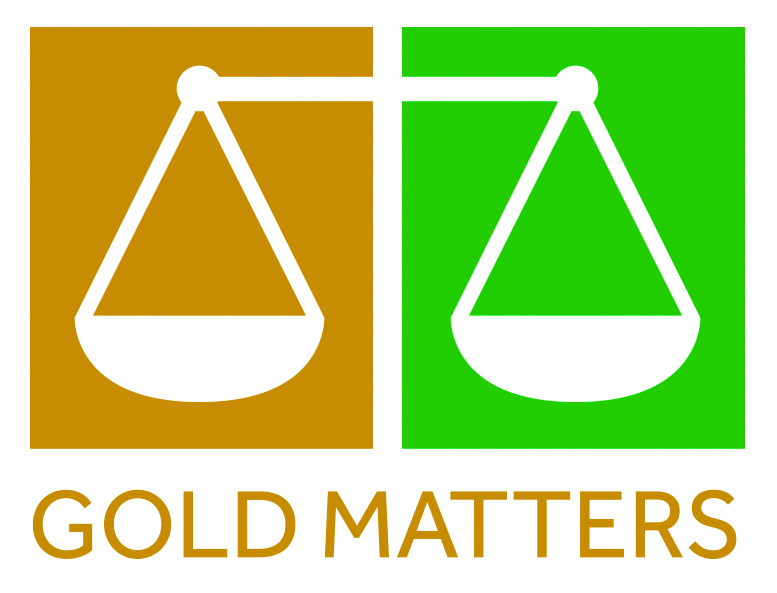In Christophe Sawadogo’s art projects co-labouring means teaming-up with artistic and artisanal experts of local communities to jointly address societal concerns
Sabine Luning
Christophe Sawadogo, a painter working in Ouagadougou, is a key member of the Gold Matters Team. The themes of his artistic work, his commitment to address societal issues and his position on art as being at the heart of society, all make Christophe a most valued and iconic member of our group.
I first met Christophe in 2015 in his atelier in Ouagadougou when doing research on water and mining in the Province of Bam, the region where Christophe’s village of birth, Tikare, is located. A friend/colleague introduced me to him because Christophe’s paintings address some of the topics we were working on; the value of water for livelihoods of farmers and cattle keepers in the Sahel, and the importance of gold mining for both men and women. In our recent conversation, Christophe explains that these issues were brought home to him at an early age. Like so many Burkinabe, his parents have migrated to Ivory Coast, leaving him, a little boy, in the care of his aunt. The aunt did not have daughters, so Christophe was raised with tasks that normally make up the life of girls, such as fetching water and strolling in the bush with goats. He saw the beauty of the Sahelian landscape, but also the hardships it poses to its residents. He made this an important theme in his work.
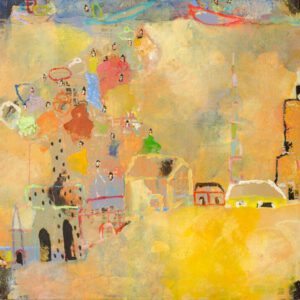

I asked how he became an artist and what his aunt thought of this choice. His aunt wanted Christophe to become a medical doctor, but while attending school in Ouagadougou, he already got interested in art and visited art gatherings and exhibitions. Apparently, women in his village got wind of these activities and he was summoned home where he had to face a ‘tribunal féminin’, women interrogating him: ‘We hear you are selling paper to white people, what are you doing?’ Their main worry was whether he could make a living as an artist and whether prices for his work were decided in all honesty.
With his aunt’s approval, he moved on into the world of art, eventually setting up his own atelier annex exhibition space. The gallery is called ‘Maan Neere’, the term in his local language Moore for ‘to do beautiful/good’. This double meaning of making something aesthetically appealing that is also morally good – combining ‘le beau et le bien’ – expresses why and how art matters to Christophe: anything that is just is in itself beautiful and something that is beautiful should be just and help achieve justice. His gallery is located in the vicinity of five schools and the University and often Christophe invites students to come to the gallery and to participate in art activities. Artists using the exhibition space do not pay commission to Christophe, but they are obliged to teach their arts to the community. For instance, by teaching schoolchildren how to make photographs and use photography to portray their own life worlds.
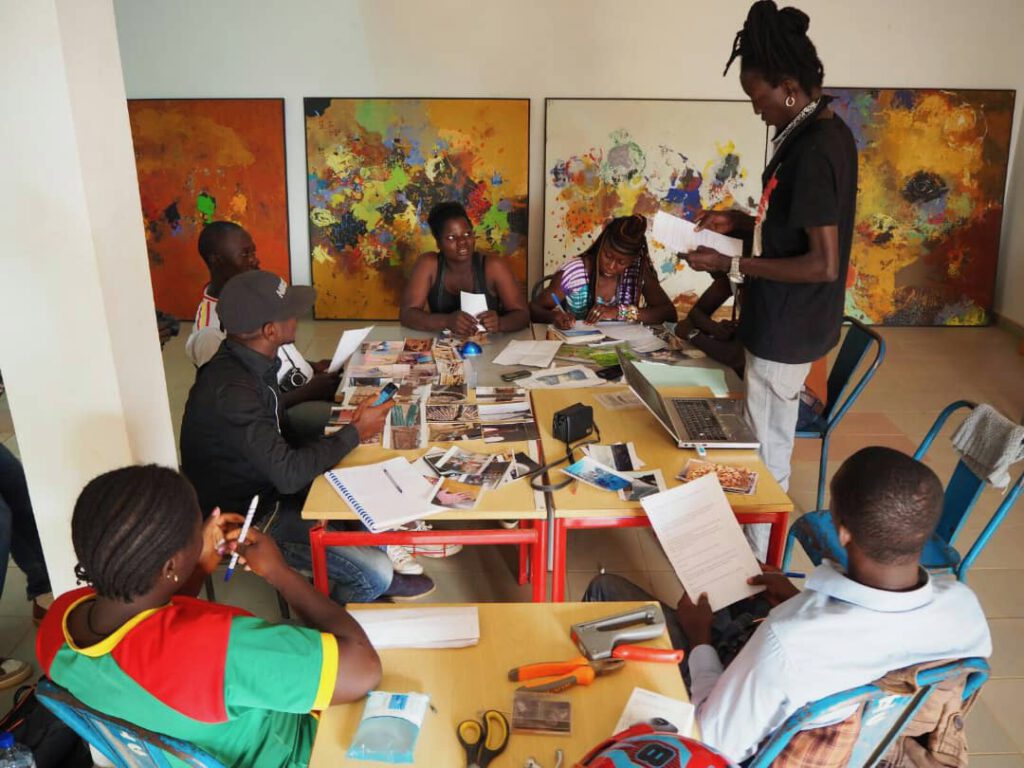
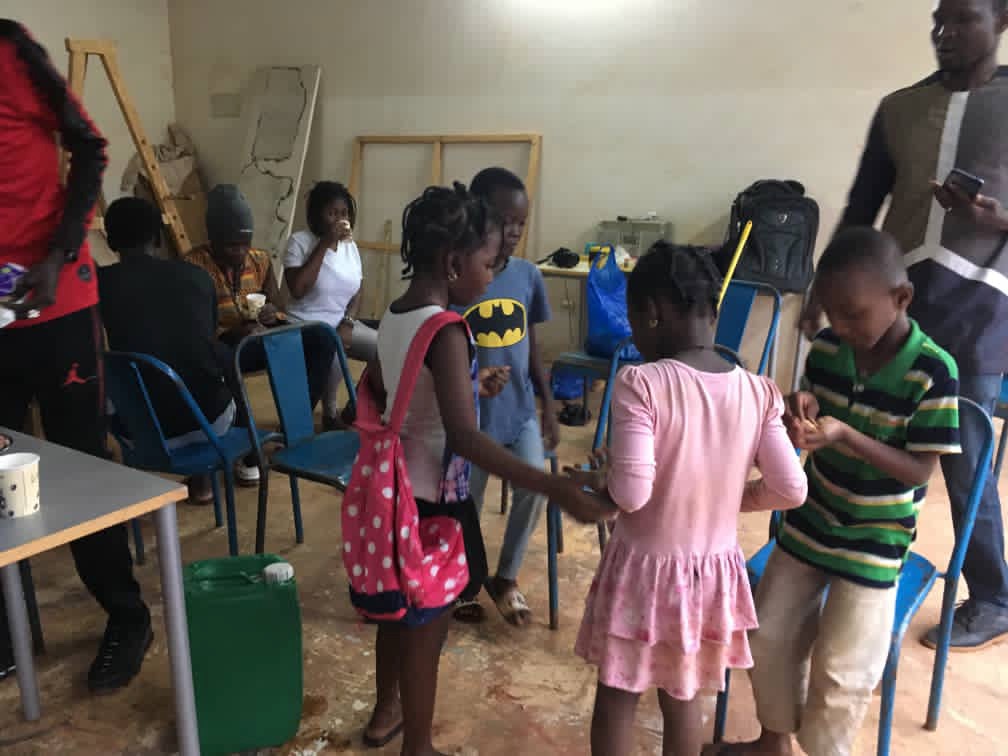
Christophe often teams up with others in making arts matter. He has for instance worked with young women who, after a difficult start in life, are now working at a tailor workshop where they can strengthen self-esteem and make their living. The creative collaborative work with some of the young women started in the streets of Ouagadougou, where papers on which plastic bags with paint had been attached were put on the road for motorbikes, donkeys and people to leave their traces. Christophe then pursued working these ‘traces of life’: he invited the girls to narrate their stories. In anonymized ways he would write these stories – as calligraphies – into the painting which came to express both hardships of the past and aspirations of the future. Some would mention Naomi Campbell as (role)model for their future.
Christophe collaborated with these young women in the true spirit of colleagues: he sees the dress-makers as fellow artists. For Christophe the line between art and the social is trespassed constantly; there is so much art in the daily work of these young urban professionals. But art is also found in the crafty way women in villages plaster and repair their houses after the rainy season. True artists are everywhere, in urban and rural parts of Africa.
His perspectives on collaborative work make Christophe a key member of the Gold Matters Team. In March 2019, at the project’s inaugurate team meeting in Takoradi, in the South of Ghana, members of the Gold Matters Team worked together with Christophe for the first time.
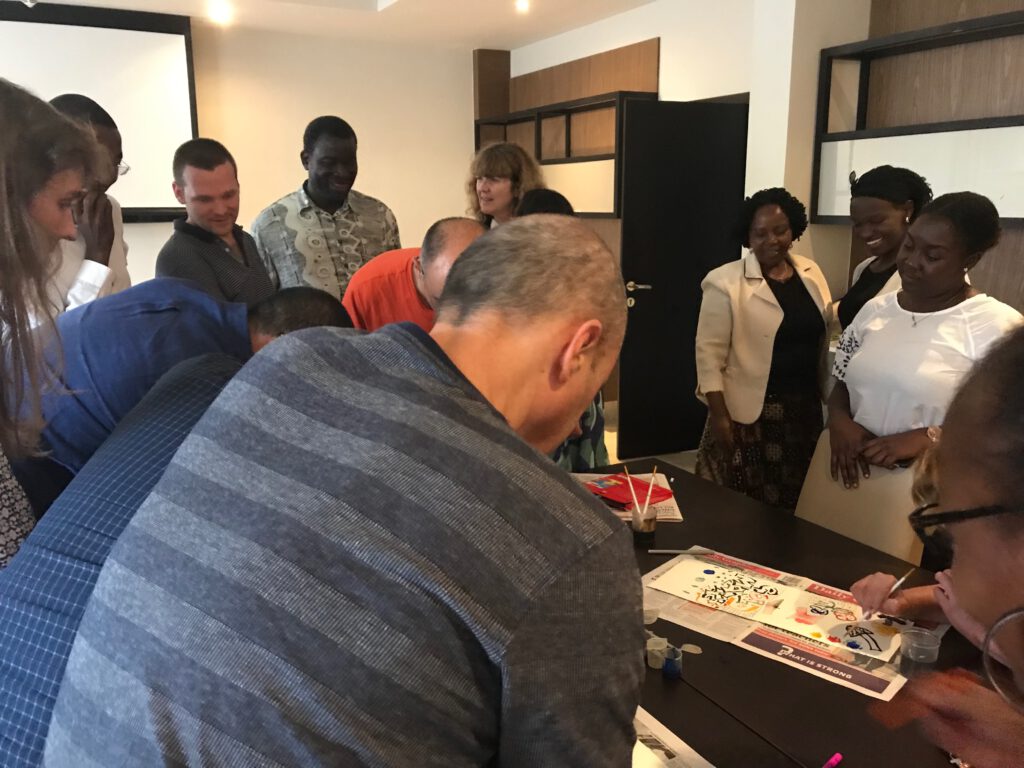
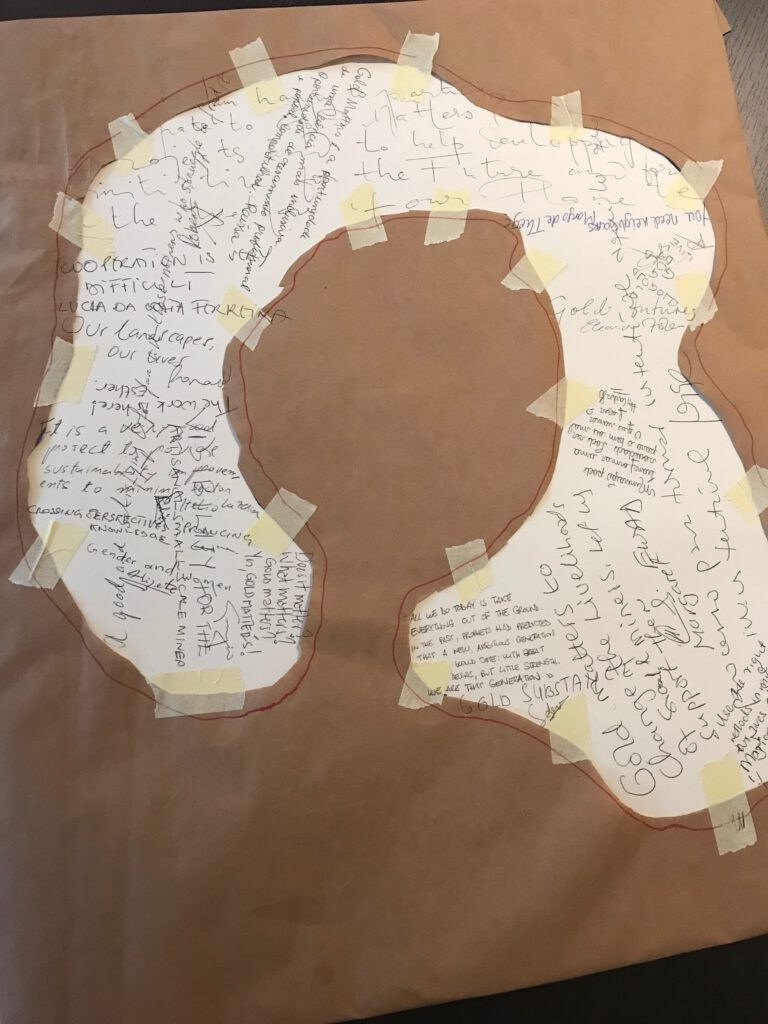
In our workshop in the mining town Tarkwa, also in the South of Ghana, Christophe made Street-Art with drivers by taking traces of car tires as starting point of his art works.
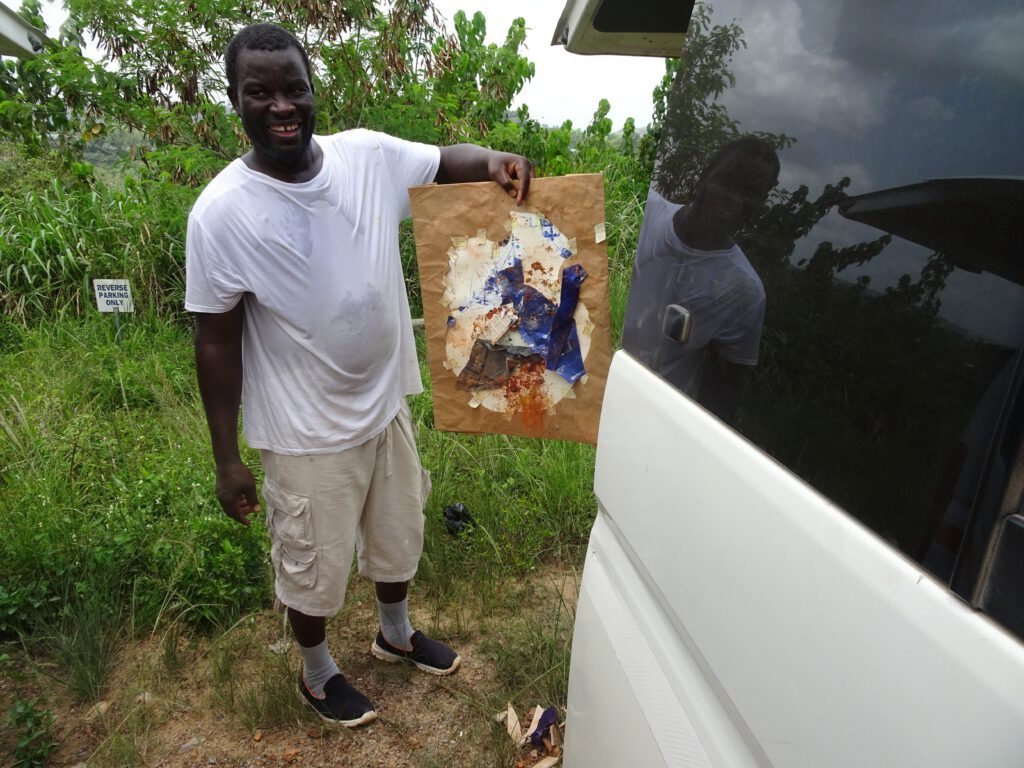
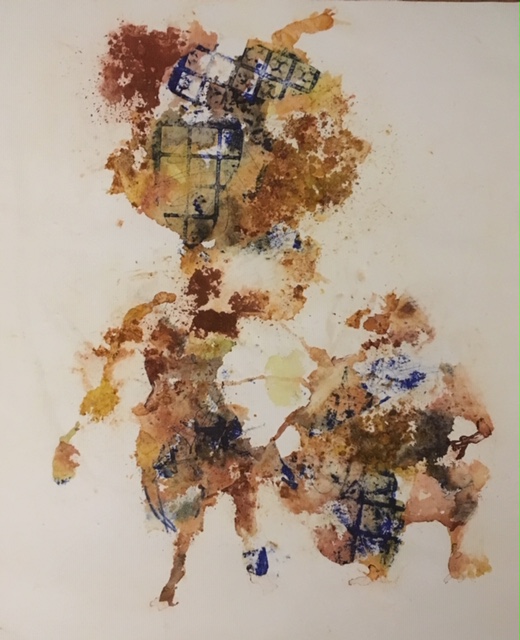
Christophes’ views on connections between art and artisanal helps to understand how artful work is at the centre of the ways the Gold Matters project stimulates co-labour between members of local mining communities, artists and researchers. This came to the fore in the Gold Matters workshop in Kejetia in January 2020. The workshop contained various activities, and art was central; we organized an exhibition bringing together photographs of mining worlds in West Africa, East Africa and the Amazon. The exhibition showed a global perspective on small-scale mining in the Gold Matters project and aimed to discuss variation in mining practices worldwide with the community in Kejetia.
The workshop also gave artistic co-labouring a key place: Christophe planned to engage community members, notably women, in the making of an art work. In the previous years, the mining community of Gbane, of which Kejetia is part, has been shocked by a series of fatal accidents involving gold miners working underground for small-scale gold operations but also employees of the Chinese run Shaanxi mining operation.
Christophe narrates how he hoped to co-labour in the creation of an art work which would both symbolize the work of artisanal gold miners and commemorate the miners who had died in the dreadful accidents. Local materials associated with mining, e.g. bags used for the transport of ore, would be used to make the installation. In our conversation, Christophe details the process of co-labouring with community members: at the start, it had been difficult to communicate intentions and commitments. There were negotiations; the wood, nails, bags had to be bought, and a carpenter had to be found to build the wooden structure with which to cover the bags which had been stitched together. It had been difficult at the start, but once arrived at the stage of painting, the installation work gained momentum: Christophe recounts how conversations with the women – who speak a language very close to his native tongue Moore – served to find common ground. The women discussed with him the similarities between their artistic work of painting and plastering houses and the painting of the bags. As a result, the women engaged in the work of painting as if decorating their houses: singing and dancing, hence making the co-labour into a total work of art. After painting – almost plastering – the whole surface of the bags, women and youth were invited to decorate the painted bags with figures symbolizing aspirations for futures of the community and for themselves. The installation work features: birds, rivers, plants and a group of cattle to highlight aspects of the environment which require care and constitute a source of wealth. One young man drew a bicycle to express that the world would be better with free mobility. For Christophe the work resembled a mine: the enclosed wooden structure was like a shaft which has been moved above the ground, the decorations made it look like a house with signs evoking possible futures. The art work became a monument by adding the helmet and the torch which one of the miners from the South of Ghana, Benjamin, had brought along when joining the Gold Matters workshop.
Christophe narrates how important it is to see art as part of social life; it expresses the beauty and the pain of people, art is present in many forms of skilled, artisanal labour, and it addresses societal concerns in new ways. Art is so much more than ‘selling paper to white men’, as the women in his village of origin put it long ago. The very confined, commodified Western way of defining art is just one form. Many artists in Africa may be tempted to follow that model, and indeed Christophe tells how some of his art friends in Ouagadougou are very surprised to hear how he is involved in making total art in a mining community in Northern Ghana. But the process of co-labouring around art as an eventful process in which social ties are made, social concerns expressed and possible futures portrayed is what takes transdisciplinary collaborations to next levels.
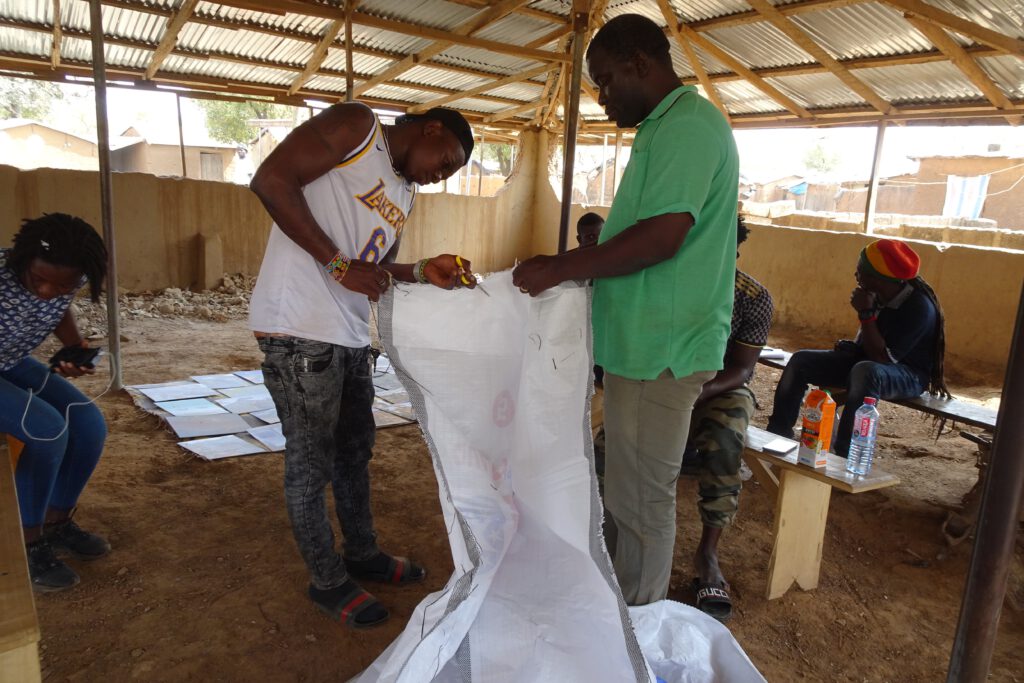
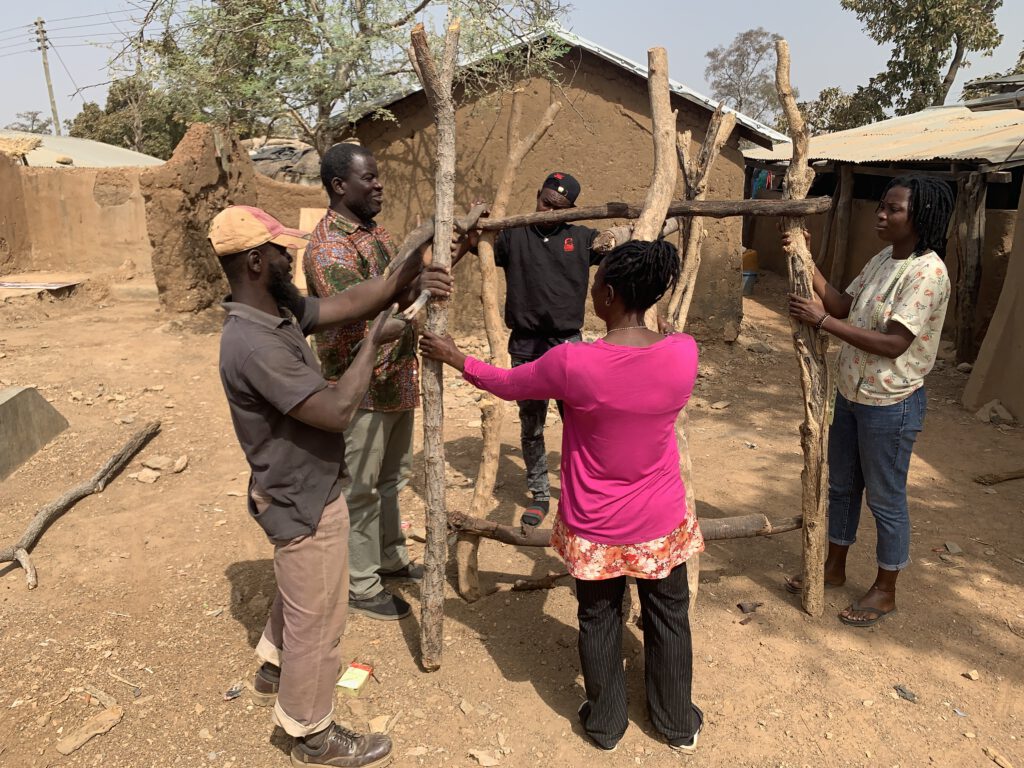
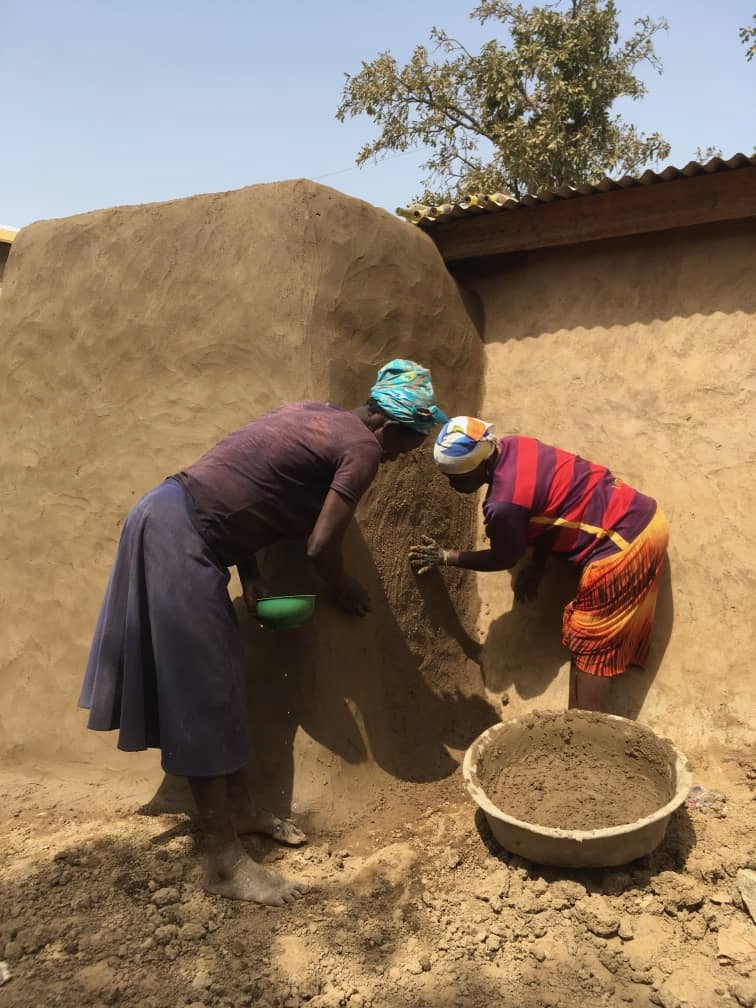
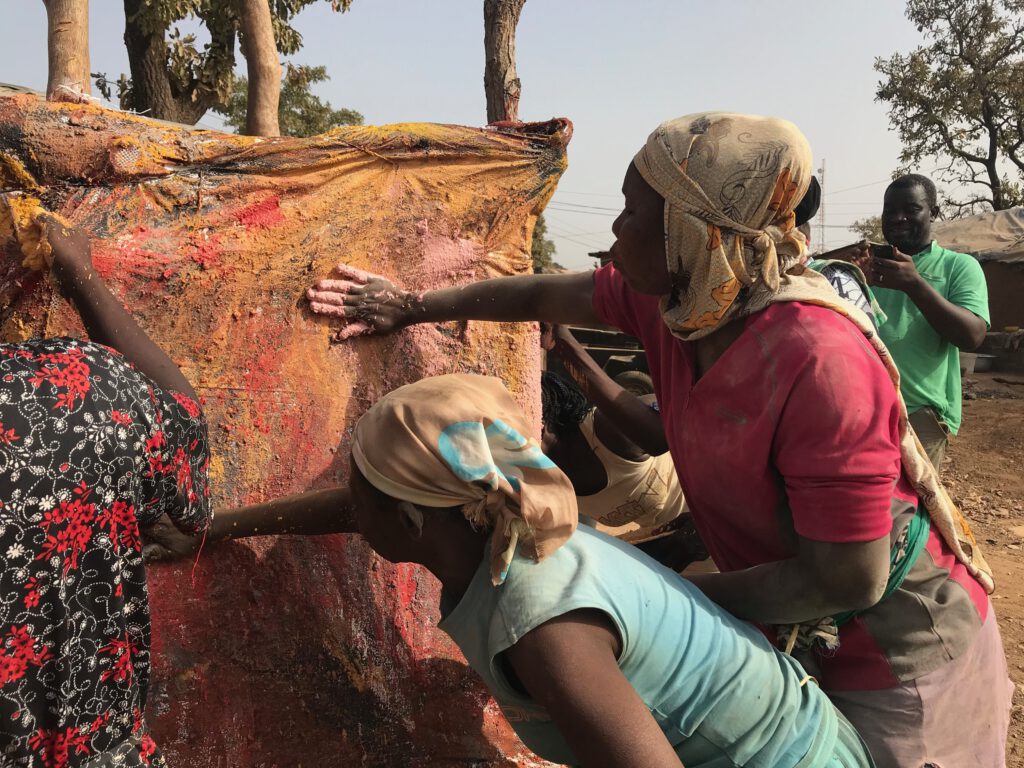

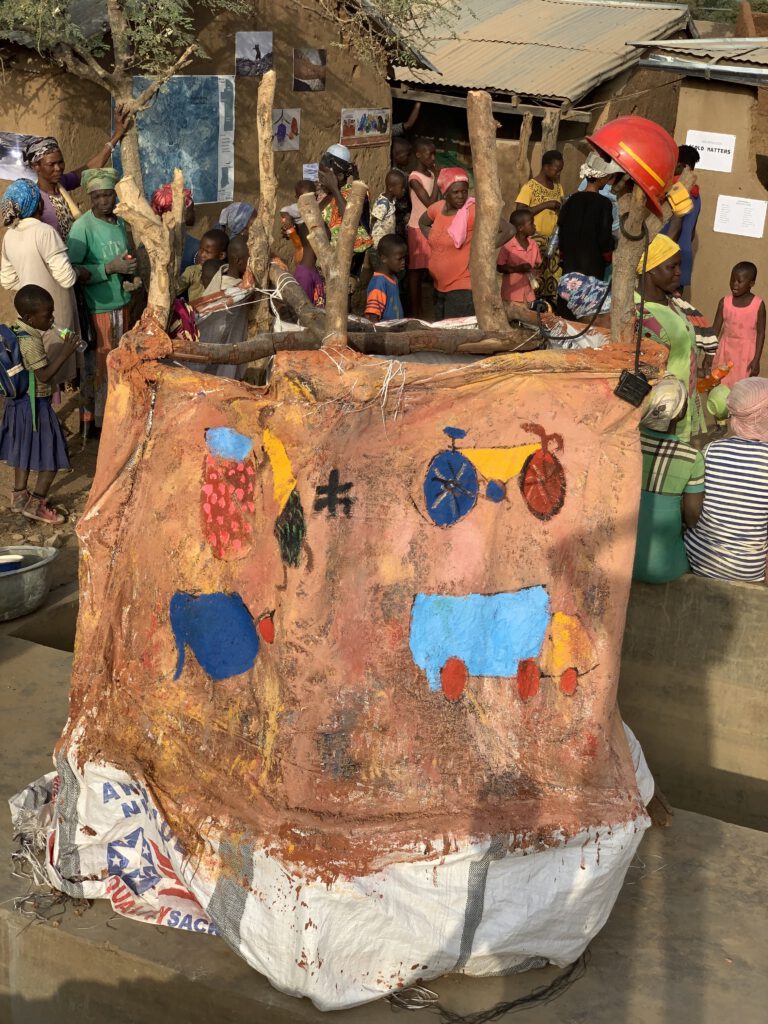
Credits Photo’s and Film: Sabine Luning (photo 5-9 and 12-13), Nii Obodai (photo 10,14), Christophe Sawadogo (photo 1-4 and 11), Gideon Vink (film)
Dr. Sabine Luning is Associate Professor of Cultural Anthropology and Development Sociology at Leiden University and a Principle Investigator with the Gold Matters project.
Email: sluning@fsw.leidenuniv.nl
Gold Matters: Sustainability Transformations in Artisanal and Small-scale Gold Mining: A Multi-Actor and Trans-Regional Perspective is a transdisciplinary research project which aims to consider whether and how a transformative approach towards sustainability can arise in Artisanal and Small-scale Gold Mining (ASGM). For more information see www.gold-matters.org.
Cite as follows: Luning, S. (2021). The Art of Co-Labouring: Christophe Sawadogo, Painter, http://gold-matters.org/?p=1475
